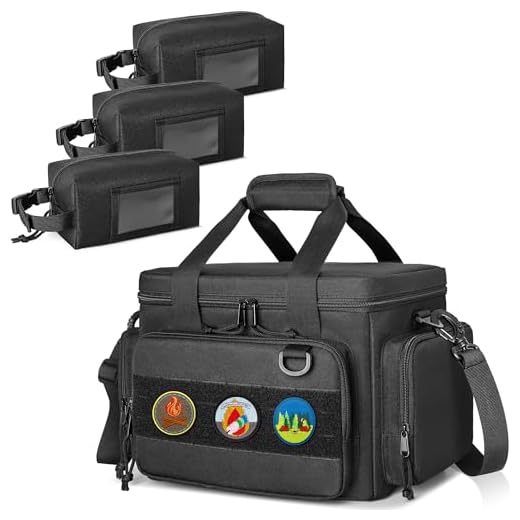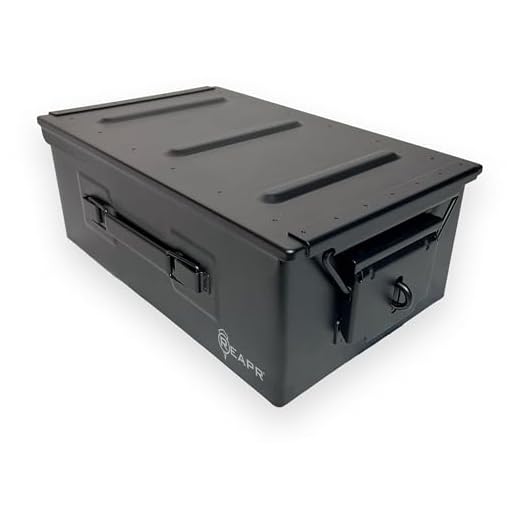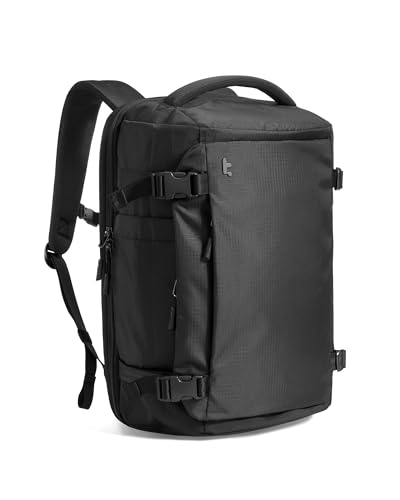



Immediate actions: take cartridges out of the detachable cartridge holder and pack them in the original manufacturer boxes or in a purpose-built metal/fiberboard ammunition container. For U.S. domestic flights most carriers follow TSA guidance limiting carriage to 11 lb (5 kg) of cartridges per passenger in hold baggage; verify the airline’s exact allowance before travel.
Regulatory checkpoints: confirm three things before departure – the airline’s policy, departure-country law, and arrival-country law. Small arms cartridges are listed under UN0012 in air transport guidance (IATA/ICAO) and some states prohibit passenger carriage entirely. Many carriers require firearm systems to be declared at check-in and may also require advance notice for transported ammunition.
Packing and security recommendations: keep projectile containers closed and immobilized inside a hard-sided case for the firearm and components. If you must transport a cartridge-holder with rounds inside, treat it as ammunition: place it in a secure ammo box, wrap to prevent movement, and position it inside the hard case away from the firearm mechanism. Retain purchase receipts, serial numbers, and manufacturer labels to speed inspections.
Risk management and enforcement: failure to follow rules risks seizure, denied boarding, heavy civil fines, and criminal prosecution depending on jurisdiction. Before travel, call the airline and contact the aviation authority for origin and destination; when in doubt, remove live cartridges from any feeding device and carry them only in approved packaging with prior carrier approval.
Is an ammo clip containing live rounds allowed in hold baggage?
Do not transport a feed device loaded with live rounds in the aircraft hold unless your airline and the aviation authorities for origin, destination and any transfers explicitly permit it.
Required actions before travel
- Contact the carrier for its specific policy on spare feed devices and ammunition packaging; get written confirmation when possible.
- Check the civil aviation authority rules for each country on the itinerary; rules vary widely and override carrier practice.
- Declare any firearm and associated parts at check-in; failure to declare can lead to seizure and criminal charges.
- When permitted, secure firearms in a locked hard-sided container and keep spare feed devices and ammunition in approved packaging (original boxes or manufacturer-approved containers).
- Segregate ammunition from the firearm when required by the carrier or regulator; label containers if required and retain purchase receipts for provenance.
- Confirm quantity limits and packaging requirements (some operators limit total rounds or require specific container types).
Consequences and risks
- Noncompliance may result in confiscation, fines, prosecution, trip disruption and travel bans from the carrier.
- Transit through a jurisdiction with stricter rules can lead to detention of the device or arrest, even if origin rules allowed carriage.
- Airports and airlines may refuse transport at check-in; arriving with an unauthorized feed device can prevent boarding or cause missed connections.
When in doubt, unload the feed device, store ammunition in approved containers separate from the firearm, and obtain explicit airline/regulator approval before attempting to transport any feeding device with live rounds in the aircraft hold.
TSA and major airlines: rules for detachable ammunition feeders and cartridges in hold baggage
Do not attempt to put a detachable ammunition feeder that contains live rounds into airline hold without following TSA procedures and the carrier’s explicit policy; TSA allows ammunition only in hold baggage when packaged correctly and firearms must be unloaded, locked and declared at check-in.
TSA baseline requirements
Firearm handling: Firearms must be unloaded, stored in a hard-sided, locked container and declared to the airline agent at check-in. Keys or combinations must remain with the ticketed passenger; locks that prevent inspection may be cut by authorities.
Ammunition handling: Cartridges are permitted only in hold baggage and must be packed in secure containers such as original manufacturer boxes or rigid ammo cans. Loose rounds inside soft bags or mixed with gear increase the chance of denial. TSA inspects packaging and will refuse improperly packaged ammo.
What major carriers typically add and recommended actions
Individual airlines set per-passenger quantity limits, container standards and documentation rules; limits and acceptance can differ significantly between U.S. and international carriers. Before travel, check the carrier’s official firearms and ammunition policy and obtain written confirmation when possible.
Packing checklist: remove all cartridges from feeding devices; pack cartridges in original or rigid containers; secure firearms in a hard-sided, locked case; keep firearms and cartridges separated; declare at check-in and obtain receipt/tag; arrive earlier than usual to allow inspection.
For international itineraries, verify the destination country’s import and transit regulations and any airline-specific export/import paperwork. When in doubt, contact the airline’s special handling or dangerous-goods desk and retain a record of communications.
How to pack and secure a detachable feed device containing live cartridges for transport in the aircraft hold
Store any detachable feed device containing live cartridges inside a hard-sided, lockable firearms case and stow that case in the aircraft hold; retain the key or combination on your person and keep proof of permits with you.
If rounds remain seated in the feed device, place the device in its original factory box or a rigid ammo can first; seal that box in a zip‑lock bag to contain dirt and oils, then surround with closed‑cell foam to prevent impact to primers and feed lips.
Immobilize the device inside the outer case: use foam blocks or dense padding to eliminate movement, apply a light tamper‑evident band or cable tie across the body to prevent spring compression, and avoid any pressure that could deform cartridges.
Lock the outer case with a high‑quality padlock or combination lock; only the traveler should retain access. Affix a printed inventory inside the case listing device type, serial number and exact cartridge count; keep a duplicate inventory and all permits in carry‑on for inspection.
Present the sealed, locked case at the airline check‑in desk if the carrier requires on‑counter inspection or declaration, and complete any required forms. Failure to follow the carrier’s procedures may result in refusal of transport or confiscation.
For case selection, choose a crush‑resistant, hard‑sided model with recessed locks and internal foam that can be customized to the device profile – see recommendations at best luggage brand in japan for durable options suitable for airline hold use.
Before travel, verify both the carrier’s ammunition limits and the destination country’s import rules; obtain written authorization when required and reduce quantity to match the strictest limit on your itinerary.
Declare cartridges and any ammunition-feeding device at airline check-in and present the documents listed below.
Required paperwork: government photo ID (passport for international flights); permit or licence to possess the firearm (where applicable); firearm registration or certificate of ownership; the airline’s weapons declaration form signed at check-in; proof of origin or purchase for cartridges (manufacturer packaging, invoice or receipt); and any country-specific import/temporary import permit for the destination and transit states.
Operational limits and when extra paperwork is mandatory
IATA/ICAO guidance normally limits cartridges to 5 kg (≈11 lb) net per passenger in hold baggage; quantities above that must move as cargo with a full Dangerous Goods (DG) shipment declaration (UN0012) and UN-approved packaging. Commercial consignments require a shipper’s DG declaration, trained shipper certification, and airline acceptance prior to travel. If transporting rounds inside an ammo carrier or similar device for professional or commercial purposes, expect cargo-only handling and customs export documentation.
| Document | When required | Issued by / Notes |
|---|---|---|
| Government photo ID | Always at check-in and security | Passport for international travel; national ID for domestic |
| Firearm possession permit / licence | If your jurisdiction requires one to own or transport a weapon | Local law enforcement / licensing authority |
| Firearm registration / certificate of ownership | If local law requires registration or for re-entry proof | Issuing government agency |
| Airline weapons declaration form | Always at airline check-in when traveling with a weapon or cartridges | Provided and signed at the carrier’s check-in desk |
| Import / temporary import permit (destination/transit) | International travel where the country requires prior authorization | Destination country’s Ministry of Interior, customs or police |
| DG/Commercial shipment documentation (UN0012) | When net quantity exceeds passenger limits or for cargo movements | Shipper’s DG declaration; airline cargo acceptance; trained shipper |
| Proof of purchase or ownership | Useful for customs or to resolve ownership queries | Invoice, receipt, or manufacturer packaging (example: best car pressure washer for home use) |
Checklist for presenting paperwork at the airport
At the counter present: ticket, photo ID, possession licence/registration, and the signed airline declaration. Request acceptance confirmation and keep the receipt/tag the carrier issues. For international movements present any government import permits and, for U.S. nationals exporting temporarily, ATF Form 4457 when applicable to prove lawful export/re-entry. If the carrier refuses acceptance, obtain written denial to show to regulatory authorities or to arrange cargo shipment.
Jurisdictions banning ammunition-feeding devices with live rounds in the aircraft hold
Avoid carrying an ammunition-feeding device containing live rounds in the aircraft hold when traveling to or via the following jurisdictions: Singapore; Japan; mainland China; Hong Kong SAR; United Arab Emirates; Saudi Arabia; Indonesia; Philippines; South Korea. These destinations commonly treat any cartridge-bearing feed device as an unauthorised weapon import unless a prior import/export licence and customs approval have been issued.
Countries that routinely require explicit advance authorisation or a firearms import permit before acceptance into the aircraft hold include Australia, New Zealand, United Kingdom, Germany, France, Spain and most other EU member states. For intra‑EU movement an EU Firearms Pass or national equivalent is normally required; failure to present it at arrival can trigger seizure and criminal charges.
North America: Canada and the United States allow transport under strict conditions set by customs and aviation security, but carriers and provinces/states add variations. Transport to or via either country without prior confirmation from the airline and without meeting federal import/export rules risks confiscation, fines and arrest. Many carriers impose additional prohibitions or total bans on cartridge-bearing feed devices in stowed hold compartments.
Middle East and Southeast Asia jurisdictions often apply zero-tolerance rules even for transit passengers who remain airside; a transit through Doha, Dubai, Singapore or Bangkok with a cartridge-containing feed device in the aircraft hold has resulted in arrests in published cases. Small states and jurisdictions with strict gun-control regimes (e.g., Hong Kong, Singapore, Japan) enforce criminal penalties rather than administrative fines.
When routing through multiple countries, treat the strictest national rule along the itinerary as binding. Always obtain explicit written permission from the destination’s competent authority and the airline before departure; retain that approval in your personal carry items such as a secure travel bag like a best backpack for mothers. Expect inspections on arrival and potential confiscation without refund where rules are breached.
What to expect at check-in and security if an ammunition carrier with live rounds is found
Expect immediate intervention: airline or screening staff will isolate the bag, open it for inspection, and tag the item. A supervisor and a security officer will normally respond within minutes; law enforcement may be summoned depending on airport policy and local law.
Typical sequence of actions by staff
1) Screening or counter personnel will document the discovery and photograph the item. 2) You will be asked to step aside for questioning and to present ID and any permits or transport declarations. 3) The bag will be retained for manual inspection; contents that pose a hazard will be removed and secured. 4) A written report or incident number will be generated; expect to sign an acknowledgement form.
Airline operations teams decide whether the item may continue in the aircraft hold, must be removed and returned to you, or will be surrendered to authorities. If the device is not compliant with airline or local rules, immediate confiscation and possible disposal are common outcomes.
Recommended actions for the passenger
Do not touch or move the item after discovery. Keep hands visible, answer questions concisely, and hand over documents: government photo ID, firearm permit/registration, and the carrier’s paperwork or airline declaration form if available. Ask for a written incident report, the name and badge number of any responding officer, and the airline contact who will handle disposition.
Anticipate operational impacts: delays, missed connections, gate reassignments, and potential refusal to transport. If criminal or civil enforcement is initiated, request contact information for the investigating agency and consult legal counsel before providing detailed statements. If the item is surrendered, obtain a receipt and the procedure for reclaiming or destroying the property.
Record all details: time, location, staff names, and the incident number. Retain boarding passes and any related receipts for use in disputes or claims with the carrier or authorities.








